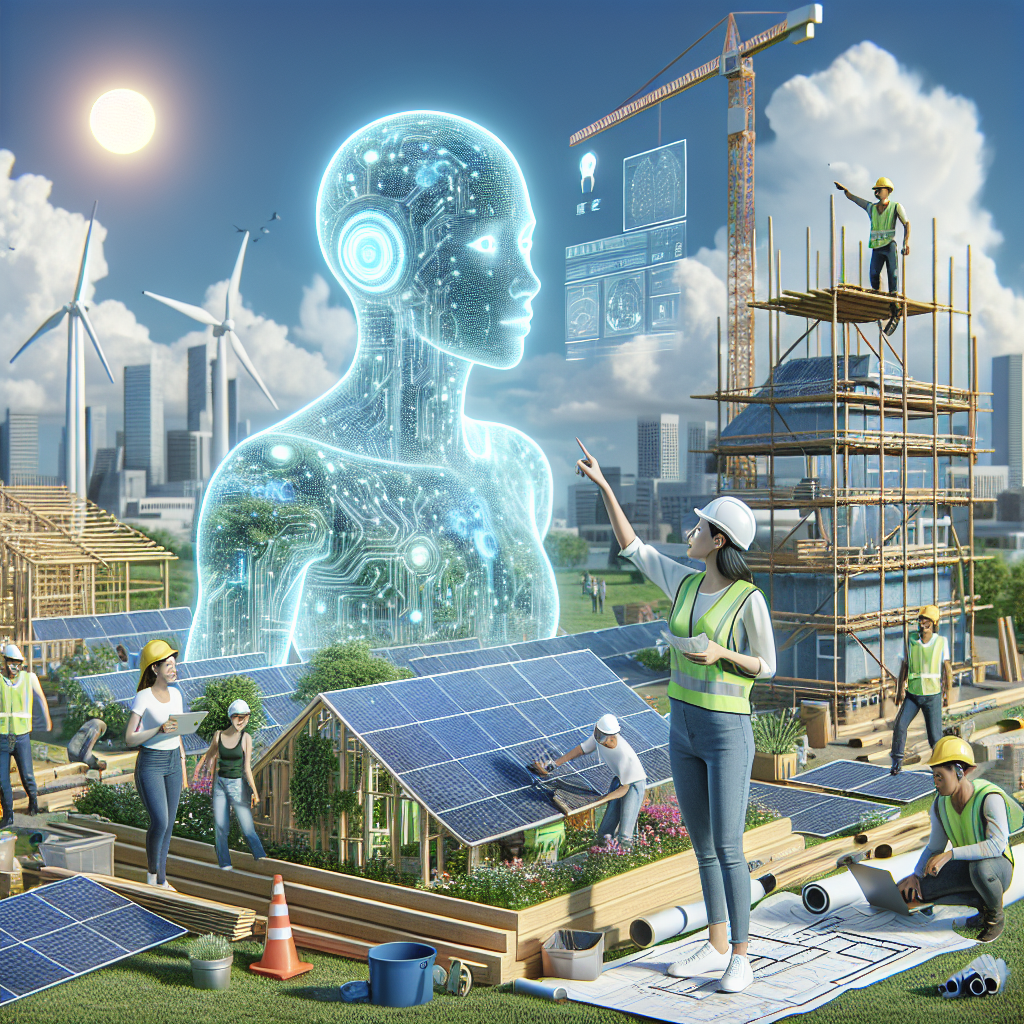The Role of AI in Promoting Green Building Practices
In recent years, the construction industry has been increasingly focusing on sustainable and environmentally friendly practices. Green building, also known as sustainable building, involves designing and constructing buildings that are energy-efficient, environmentally responsible, and resource-efficient. These buildings are designed to reduce their environmental impact and improve the health and well-being of occupants.
One of the key technologies driving green building practices is artificial intelligence (AI). AI refers to the simulation of human intelligence processes by machines, especially computer systems. AI has the potential to revolutionize the construction industry and promote green building practices in several ways.
1. Energy Efficiency
AI can play a significant role in improving the energy efficiency of buildings. By analyzing data from sensors and monitoring systems, AI can optimize the operation of heating, cooling, lighting, and other building systems to minimize energy consumption. AI-powered building management systems can automatically adjust settings based on factors such as occupancy, temperature, and weather conditions, leading to significant energy savings.
2. Predictive Maintenance
AI can also help in predicting maintenance needs and identifying potential issues before they occur. By analyzing data from sensors and equipment, AI algorithms can detect patterns and anomalies that indicate a potential maintenance issue. This proactive approach to maintenance can help prevent costly breakdowns and prolong the lifespan of building systems, reducing the environmental impact of construction and operation.
3. Material Selection
AI can assist in the selection of sustainable materials for construction. By analyzing data on the environmental impact of different materials, AI algorithms can recommend the use of materials that are environmentally friendly, such as recycled or renewable materials. This can help reduce the carbon footprint of buildings and promote sustainable construction practices.
4. Waste Reduction
AI can also help in reducing waste during the construction process. By optimizing construction schedules, material usage, and resource allocation, AI algorithms can minimize waste and increase efficiency. This can lead to cost savings and a reduced environmental impact, as less material is wasted and fewer resources are consumed.
5. Indoor Air Quality
AI can also play a role in improving indoor air quality in buildings. By analyzing data from sensors and monitoring systems, AI algorithms can detect pollutants and contaminants in the air and recommend interventions to improve air quality. This can help create a healthier and more comfortable indoor environment for occupants, promoting their well-being and productivity.
FAQs:
Q: How does AI improve energy efficiency in buildings?
A: AI can optimize the operation of heating, cooling, lighting, and other building systems by analyzing data from sensors and monitoring systems. This allows AI-powered building management systems to automatically adjust settings based on factors such as occupancy, temperature, and weather conditions, leading to significant energy savings.
Q: How can AI help in predicting maintenance needs in buildings?
A: By analyzing data from sensors and equipment, AI algorithms can detect patterns and anomalies that indicate a potential maintenance issue. This proactive approach to maintenance can help prevent costly breakdowns and prolong the lifespan of building systems, reducing the environmental impact of construction and operation.
Q: How does AI assist in material selection for sustainable construction?
A: AI algorithms can analyze data on the environmental impact of different materials and recommend the use of environmentally friendly materials, such as recycled or renewable materials. This can help reduce the carbon footprint of buildings and promote sustainable construction practices.
Q: How does AI reduce waste during the construction process?
A: By optimizing construction schedules, material usage, and resource allocation, AI algorithms can minimize waste and increase efficiency. This can lead to cost savings and a reduced environmental impact, as less material is wasted and fewer resources are consumed.
Q: How does AI improve indoor air quality in buildings?
A: AI algorithms can analyze data from sensors and monitoring systems to detect pollutants and contaminants in the air. This allows AI to recommend interventions to improve air quality, creating a healthier and more comfortable indoor environment for occupants.
In conclusion, AI has the potential to revolutionize the construction industry and promote green building practices by improving energy efficiency, predicting maintenance needs, assisting in material selection, reducing waste, and improving indoor air quality. By harnessing the power of AI, the construction industry can create sustainable and environmentally friendly buildings that benefit both the environment and occupants.

